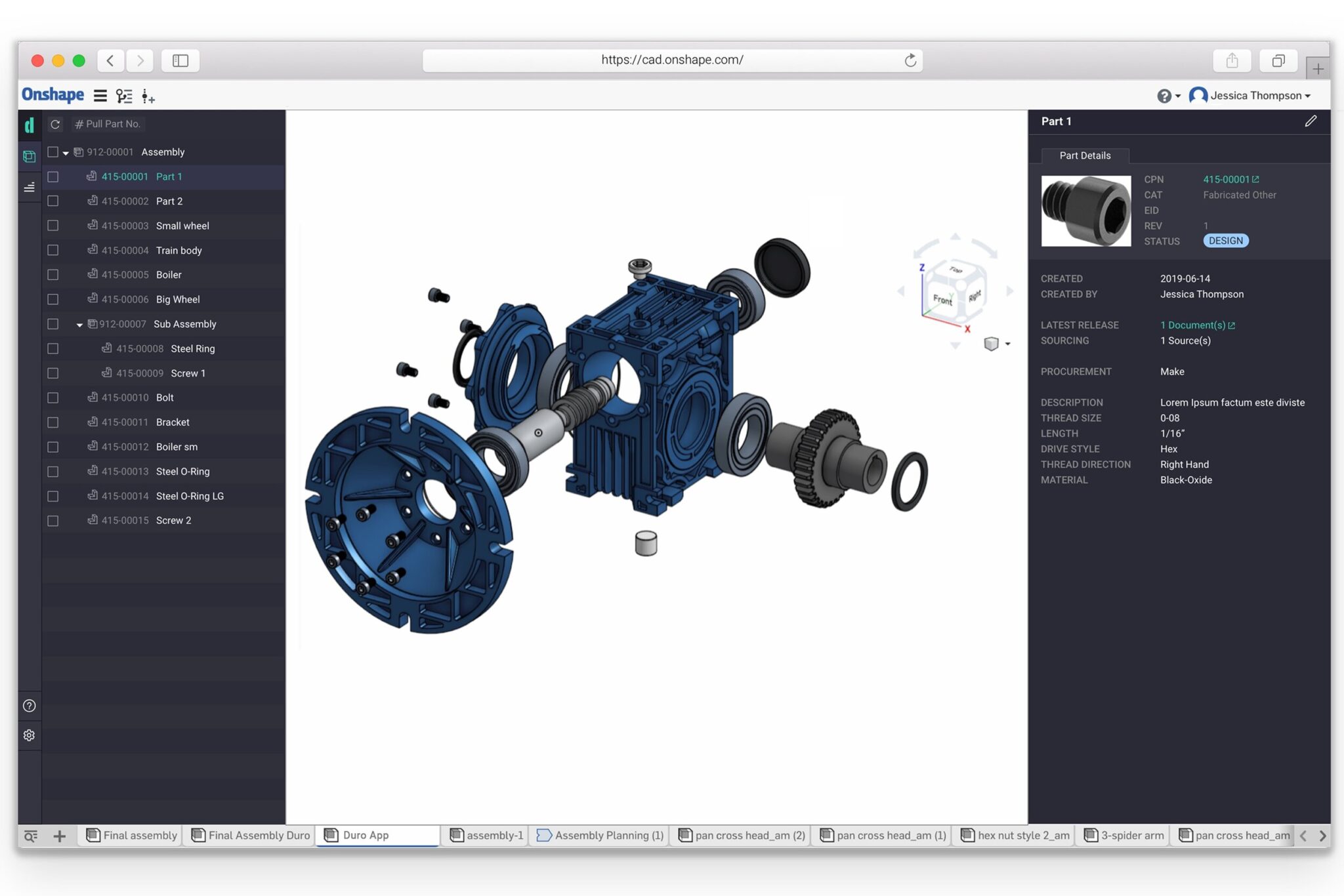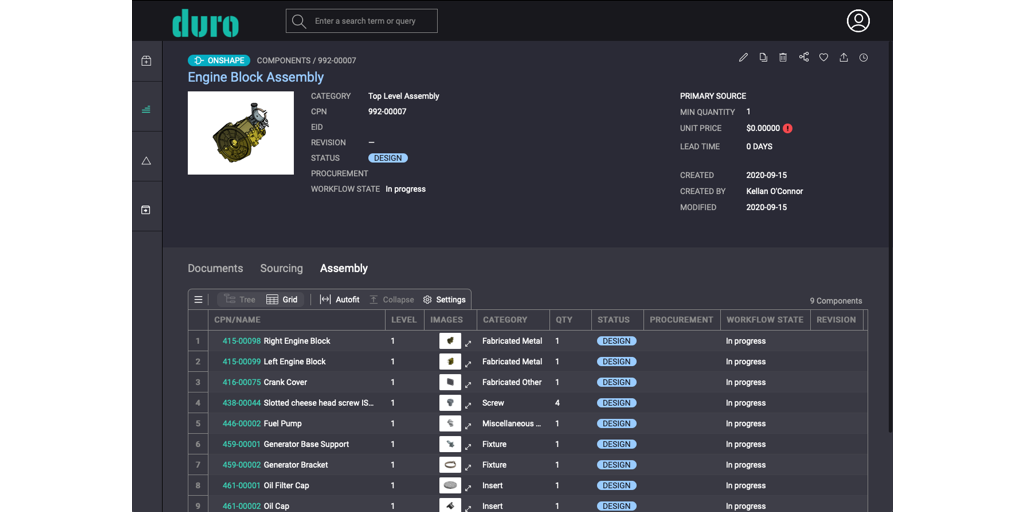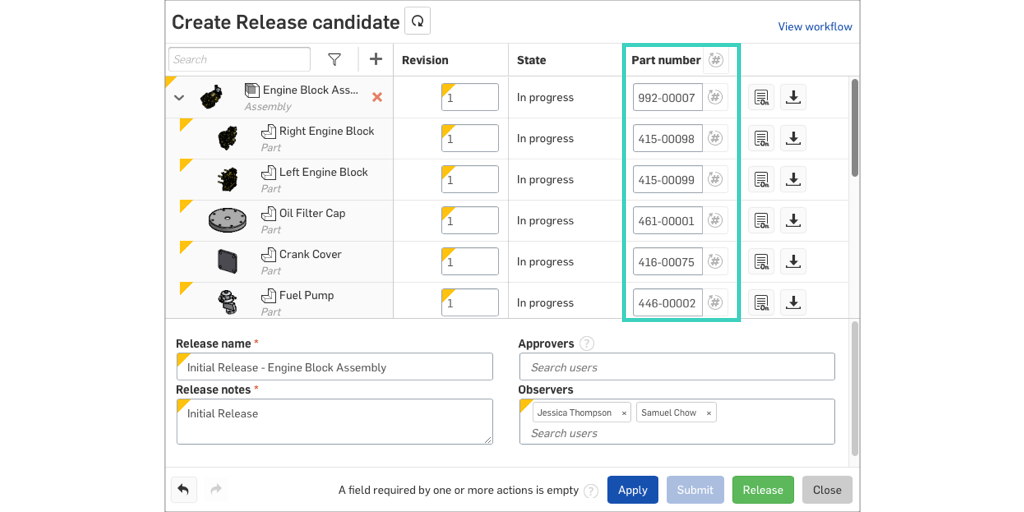
How Duro’s Part Numbering System Works with Onshape
We previously explained Why you should base your Part Numbering System in PLM and not in CAD. Below we now explain how Duro can specifically help Onshape users achieve a PLM-based Part Numbering System.
Onshape, the industry leading cloud mechanical CAD platform, provides users with the ability to assign Customer Part Numbers (CPNs) to Onshape-based parts, assemblies, and drawings. This convenient tool allows hardware design engineering teams to deploy a part number generator in the early phases of the product design process, as the Bill of Materials is taking shape. As more and more hardware design engineering professionals are adopting the industry best practice of a PLM-based manufacturer part number generator, we wanted to share exactly how Onshape users can easily adopt Duro’s centralized PLM-based Customer Part Numbering System to implement this best practice.
Duro is an award-winning cloud-native Product Lifecycle Management platform for agile and distributed hardware teams. Schedule a demo to see how Duro can help your team.
The Duro PLM app for Onshape, available in the Onshape App Store, makes it easy for Onshape users to leverage Duro’s PLM-based Part Numbering System .
Once the Duro PLM for Onshape app has been added to your Onshape document, switching to Duro’s part number generator tool is trivial.
- Select the desired parts and assemblies from the left sidebar of your hardware number generator;
- Select the “Pull Part Number” button;
- Assign an appropriate category for each item and click Done.
That’s all there is to it. Within seconds you can assign Duro PLM-based CPNs to Onshape native parts and assemblies.

Assigning Duro-based part numbers to Onshape components within the Duro PLM app
Each Onshape part and assembly assigned a new Duro Part Number will now have a component record within your Duro account library. These centralized Duro records facilitate communicating BOM and component information directly from Onshape to team members and suppliers who may not have access to Onshape. This promotes transparency and allows them to perform preliminary tasks without waiting for a formal release. This is the immediate benefit from assigning new PLM-based Customer Part Numbers and serves as a great way to foster communication and transparency.
With the fastest onboarding time and an out-of-the-box Onshape integration, Duro empowers engineers to get to production at the lowest cost and highest efficiency.
Schedule a demo to see how Duro and OnShape work together.

Duro component page for an Onshape-based assembly
Of course, the value of the Duro PLM app for Onshape only grows with each release generated from Onshape to Duro. Duro has built its release feature to be completely compatible with the existing Onshape Release Management workflow. Nothing changes for the Onshape user, they load the same Release modal and go through the same steps. Shown below, you’ll see that Duro-based part numbers are now present in the Release Candidate modal, as they are throughout the app for corresponding components.

Onshape Release Modal showing Duro-based part numbers
Used together, Duro’s and Onshape’s PLM technology services make a lot of sense for companies interested in leveraging the power of the cloud to manage their hardware product data. Duro’s app for Onshape extends the value of Onshape by providing a simple means of setting up a centralized PLM-based Part Numbering System and allowing design releases to be accessible to all team members.
Delegating your Part Numbering System to Duro further allows Onshape users to gain additional value by leveraging Duro’s category-driven part numbering validation checks and component-level communication. These features allow engineers to protect designs until release and will be covered in more detail in the upcoming posts within our “Onshape-Duro Integration” Blog Series.